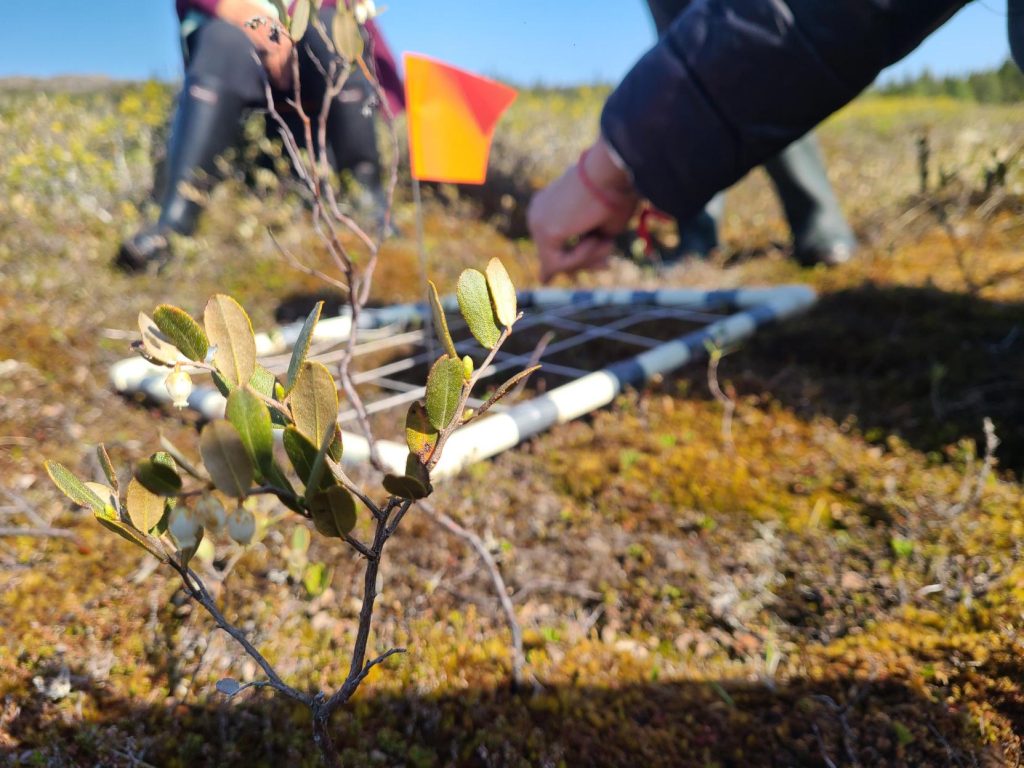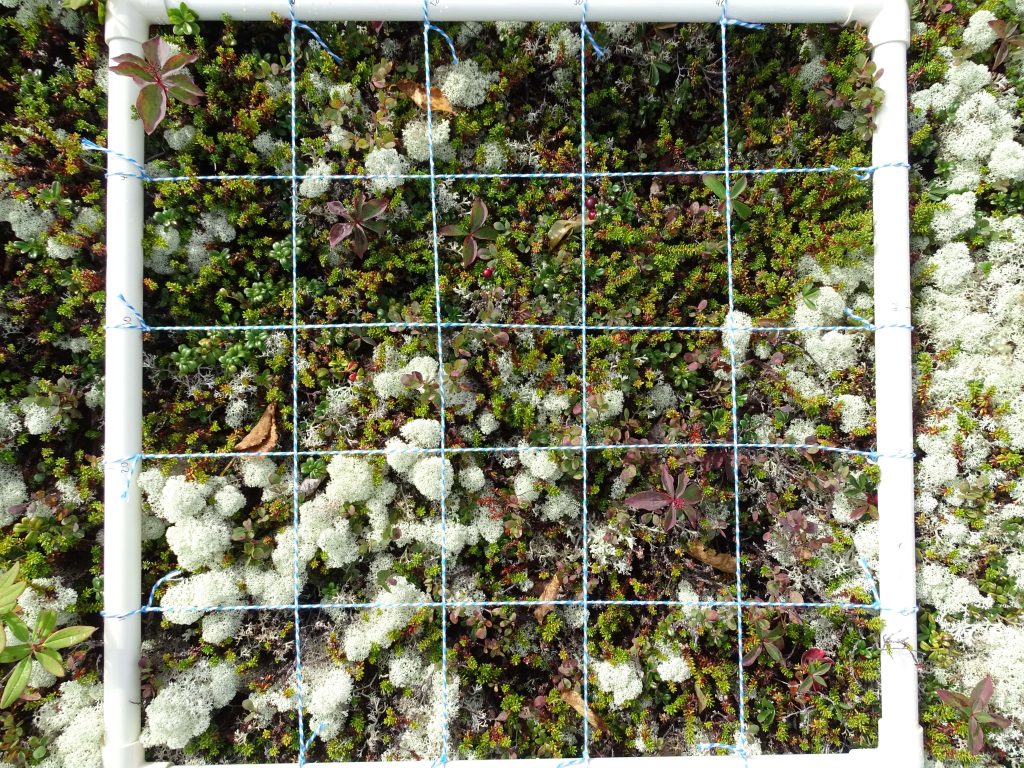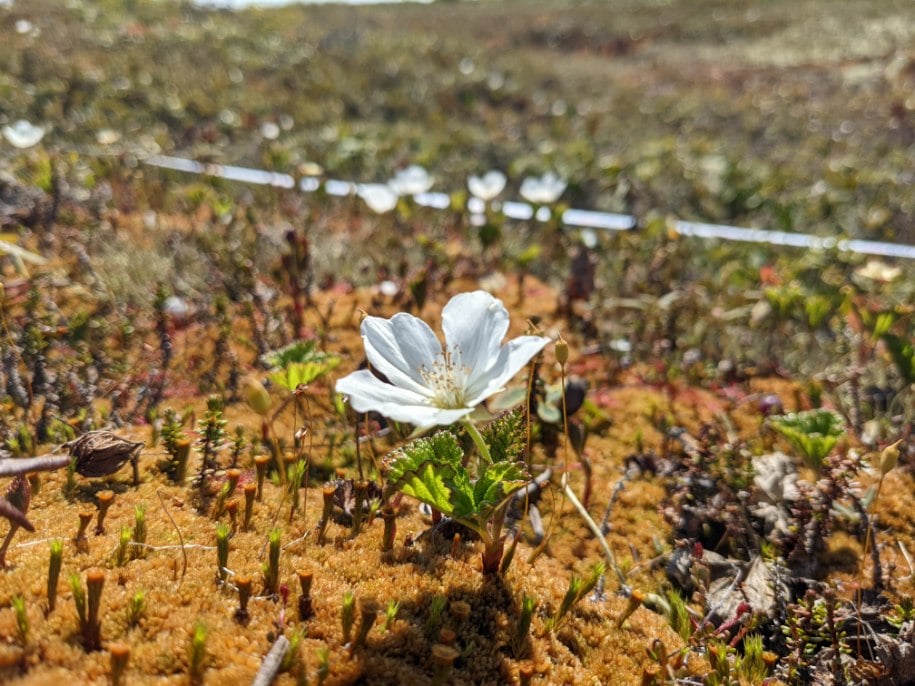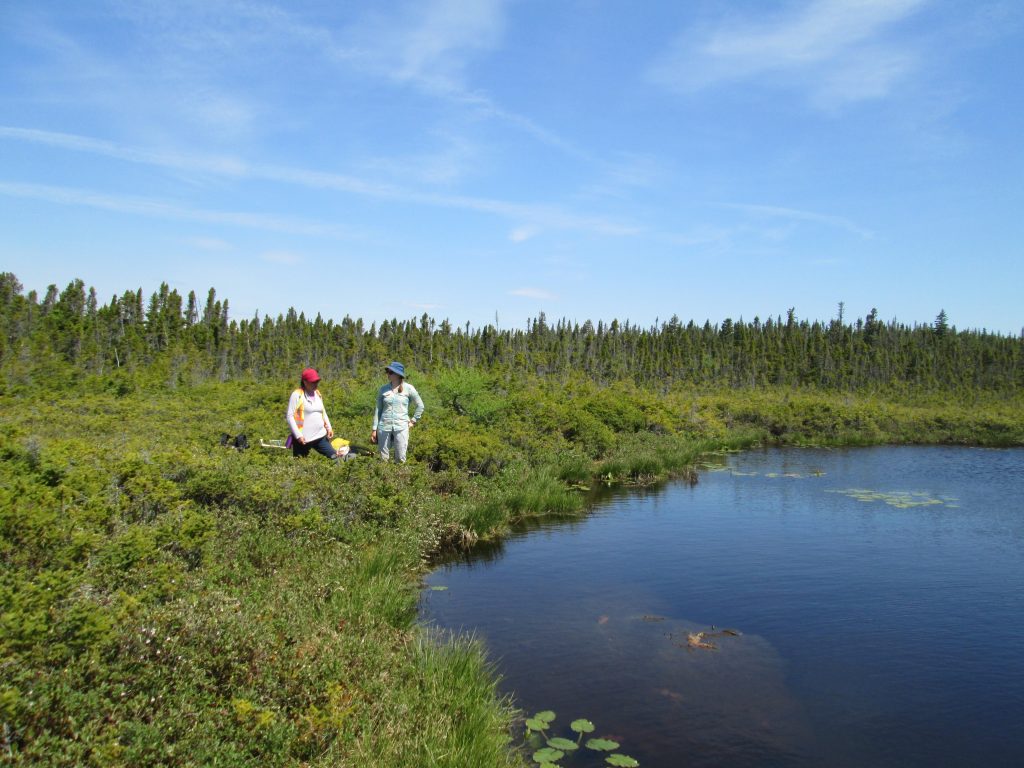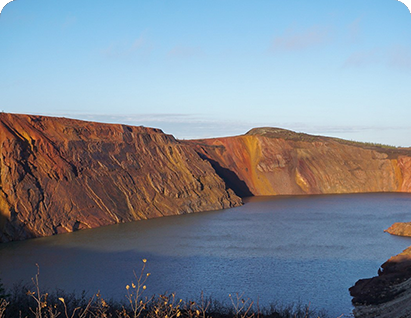Four Innu First Nations collaborate on climate monitoring of berries
Project carried out in collaboration with the Innu First Nations of Ekuanitshit, Nutashkuan, Unamen Shipu and Pakua Shipu.
Since 2021, we have had the honor of accompanying the First Nations of Ekuanitshit, Nutashkuan, Unamen Shipu and Pakua Shipu in a berry monitoring project on Nitassinan, Innu ancestral land. This project is carried out in collaboration with McGill University and the CEDFOB (Centre d’expérimentation et de développement en forêt boréale). It aims to study the effects of climate change on blueberries, ligonberries (seeds) and chicoutai.
Each year, four Nitassinan agents and four students are hired to monitor the health, flowering and productivity of berry plants, as well as documenting the abundance of pollinating insects. Their work continues in winter with continuous ground temperature and snow height measurements. The aim of this data is to assess the effects of climate change on berry plants, and thus put in place solutions to ensure the continued harvesting of berries.

Berry picking is part of Innu culture
Berry picking is a traditional activity that links Innu women to their land and culture. Concerned that the abundance and productivity of berry plants were declining, and that a traditional activity was being threatened, women from Ekuanitshit decided to take action and document the effects of climate change by combining traditional and scientific knowledge.



